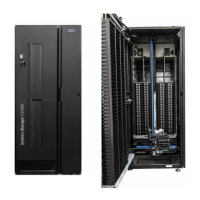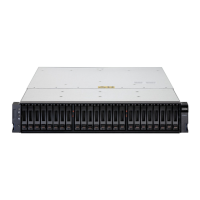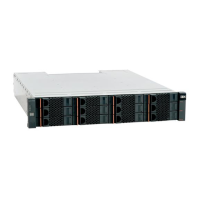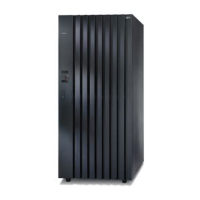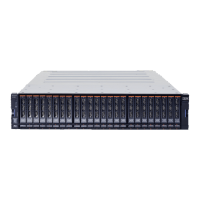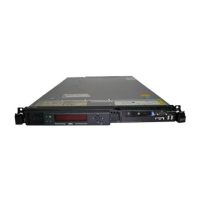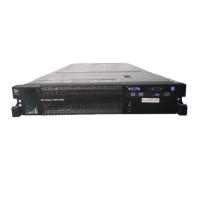Chapter 8. MetroCluster 111
8.4.1 Planning Fabric MetroCluster configurations
When you are planning and sizing Fabric MetroCluster environments, remember the following
these considerations:
Use FibreBridges with SAS Shelves (EXN3000 & EXN3500).
Provide enough ports or loops to satisfy performance (plan for more adapters if
appropriate).
Storage must be symmetric (for example, same storage on both sides). For storage that is
not symmetric but is similar, file a RPQ/SCORE.
N series native disk shelf disk drives are not supported by MetroClusters.
Four Brocade/IBM B-Type Fibre Channel Switches are needed. For more information
about supported Switches and firmware in Fabric MetroCluster environments, see the
Interoperability Matrix that is available at this website:
http://www-304.ibm.com/support/docview.wss?uid=ssg1S7003897
One pair of FC switches is required at each location. The switches must be dedicated for
the MetroCluster environment and cannot be shared with other systems. You might need
the following licenses for the Fibre Channel switches:
– Extended distance license (if over 10 km)
– Full-fabric license
– Ports-on-Demand (POD) licenses (for more ports)
Infrastructure and connectivity have the following options:
– Dark fiber: Direct connections by using long-wave Small Form-factor Pluggable
transceivers (SFPs) can be provided by the customer. No standard offering is available
for these SFPs for large distances (greater than 30 km).
– Leased metro-wide transport services from a service provider: Typically provisioned by
dense wavelength division multiplexer/time division multiplexer/optical add drop
multiplexer (DWDM/TDM/OADM) devices. Make sure that the device is supported by
fabric switch vendor (IBM/Brocade).
– Dedicated bandwidth between sites (mandatory): One inter-switch link (ISL) per fabric,
or two ISLs if the traffic isolation (TI) feature is used and appropriate zoning. Do not
use ISL trunking because it is not supported,
Take care in designing fabric MetroCluster infrastructure. Check ISL requirements. Also,
cluster interconnect needs good planning and performance.
Latency considerations: A dedicated fiber link has a round-trip time (RTT) of
approximately 1 ms for every 100 km (~ 60 miles). More nonsignificant latency might be
introduced by devices (for example, multiplexers) en route. The following distance
considerations must be taken into account for increasing distance between sites
(assuming 100 km = 1 ms link latency):
– Storage response time increases by the link latency. If storage has a response time of
1.5 ms for local access, the response time increases by 1 ms to 2.5 ms over 100 km.
– By contrast, applications respond differently to the increase in storage response time.
Some application response time increases by greater than the link latency. For
example, application A response time with local storage access is 5 ms and over
100 km is 6 ms. Application B response time with local storage access is 5 ms, but over
100 km is 10 ms.

